Garden chamomile (nivyanik) - how to grow an unpretentious charm
Nivyanik, or garden chamomile, is an unpretentious perennial plant that lives in most domestic gardeners. The bushes grow quickly, and you have to fence off the area with white beauties. The plant is absolutely unpretentious, you need to know just a few secrets to get a beautiful, boiling white flower bed.
A little about the plant
Common Nivyanik - popularly also called "popovnik", but in general it is a well-known garden chamomile, flowers loved by many and found in front gardens, on flower beds of city parks and garden plots.
The plant is unpretentious and takes root on any type of soil. The flowers are frost-resistant, perennial, belong to the class of Compositae. The length of the stem in some varieties reaches 1000 mm, the smallest daisies grow up to 300 mm. Flower diameter - up to 100 mm. under normal conditions and sufficient care, the bushes can bloom twice a season. The first time - in June or July, the second - in August or September, the beginning of budding depends on your climatic zone.
Nivyanik is a versatile ornamental plant. It is planted in a group with other types of flowers or in a separate area. In all conditions, chamomile will decorate different corners of your garden. It looks especially beautiful with pink pyrethrum or plantain doronicum. This combination will bring harmony and delicate palette to the garden's color palette.
A bouquet of garden daisies looks very cute and does not lose its freshness for a long time. Putting it in a vase of water, we get a beautiful composition with the addition of bells, cornflowers, which retains its attractive appearance for 10 days.
The foliage and flowers of chamomile are rich in carotene, inulin and are used in cooking, folk medicine and cosmetology. We add that the seeds of the daisy contain 11% fatty oils.
Chamomile breeding methods
Most often, gardeners grow and propagate daisy bushes in one of three methods:
- By division. By carefully dividing the root system into several parts with young shoots, we calmly remove the old bushes of flowers. Then we plant new ones in a prepared place, which will delight us for 4-5 years.
- Sowing in open ground. The work is carried out in the pre-winter period, then the material is naturally stratified in the winter, and in the spring the first shoots break through on the site. Unfortunately, these bushes will bloom only next year.
- The most popular method among florists - planting seeds for seedlings. Seeds are stratified in a refrigerator or cellar, then sown in temporary soil. And already grown and strong seedlings are moved to the flower garden.
Let's take a closer look at the process of growing flowers from seed.
Planting garden chamomile seeds
We begin preparations in early spring. Otherwise, beautiful flowers on the bushes will appear only next year.
If we decide to sow in open ground, in the allotted area in late autumn we prepare grooves at a distance of 200 mm and distribute the seeds in an even layer. After that, we cover the trenches with soil and water. In winter, the seed is sorted and shoots appear in early spring. The process is long and not very productive. The plant will have to thin out and care for them all season, and the flowers will bloom only after a year.
It is best to plant the seeds in late winter or early spring in small peat cups or cassettes, crates, or plastic cups. A box common to all seedlings is also quite suitable - the sprouts will still have to dive and plant in separate containers.The main rule is that bowls or glasses should not be large.
We carry out the work in several stages:
- We prepare the soil in advance: we buy or mix ourselves from equal shares of sod land and river sand. The main thing is to ignite the soil on fire in order to get rid of eggs and larvae of parasites, spores and disease vectors.
- We put a layer of drainage on the bottom of the container and fill the rest of the distance with prepared or purchased soil.
- We level the soil, make grooves 10-15 mm deep and pour water from a watering can.
- We spread the seeds and sprinkle with a layer of light and loose soil.
- We moisten the soil from the sprayer, wrap the boxes with foil or Agrospan. Another option is to cover the drawer with a piece of glass or mirror.
- We place the containers in a well-lit place with room temperature.
- The first shoots appear after 10-15 days. Now the conditions of the micro-greenhouse need not be maintained - we remove the glass or bags.
- The optimum temperature for the further development of plants is + 18-19 ° C.
- Seedlings do not need special care. The main thing is to maintain a constantly loose and moist soil.
- After the appearance of the first 2 true leaves, we dive the seedlings. Having slightly shortened the roots, we plant strong plants in separate cups, preferably peat ones, so that in the spring we immediately plant young daisies in place and not get them out of containers.
- It will take 2-2.5 months to grow good and strong seedlings. During this time, it is worth feeding the seedlings with ready-made liquid complex fertilizer. It is better to do this before and after the pick.
- While the sprouts are getting stronger, we are preparing a place for their transplant. In early spring, sprinkle humus over the selected area in an even layer, add any nitrogen fertilizer and superphosphate. If the soil is acidic, we perform liming. Further, deeply, on the bayonet of a shovel, we dig up the earth and at a distance of 250-300 mm we make landing holes (their depth is 250-300 mm, dimensions - at least 300 mm).
- We fill the bottom of the hole with river sand or broken brick, but it is better to use insulating expanded clay granules.
- Having made small indentations, we plant the grown seedlings in the prepared holes. Having placed seedlings in them, we hold them strictly vertically and fill them with loose, lump-free soil.
- We compact the soil a little and pour it with warm water.
The seedlings have been planted and a long and important stage of saving and creating good conditions for development for seedlings and adult plants begins. Let us examine this work in detail.
Care features
Nivyanik does not require time and effort to take care of it. Chamomile is a rather unpretentious plant, but you should not forget about leaving, otherwise the flower beds will not boil with white buds.
Watering and loosening the soil. For free supply of nutrition and oxygen to the root system, it is important to maintain loose and constantly moist, but not wet soil under the bushes. If you follow this rule, we will get a strong plant with large and bright flowers. Frequent watering will only harm the daisy.
In a dry period, we must increase the number of irrigations to daily, but reduce their volume. Irrigation rate - up to 1 bucket of water per 1 m2... A layer of mulch will help to retain moisture, so it is recommended to cover the ground around the bushes with tree bark, sawdust or even plucked weeds.
Weed control. This work is already carried out by gardeners, so it is wrong to consider it important only for daisies. Weeds draw moisture and nutrition from the soil that all garden plants and flowers need. Therefore, the fight against them is the sacred duty of gardeners.
Top dressing. Supplemental nutrition is essential for the housekeeper throughout the development cycle. In the spring we apply organic matter and nitrogen fertilizers. Before flowering, we definitely support the plants in order to increase the number of flower sets and their sizes. And during flowering, we introduce potassium-phosphorus fertilizers, or better - a solution of rotted manure, at intervals of 2-3 times a month.You can alternate root dressing with foliar. Before winter, fill the ground around the bushes with organic matter and wood ash.
Pruning. It is very simple to extend the flowering period of chamomile - we remove the wilting flowers and stems. The latter is cut off carefully, with a sharp secateurs, at a distance of 150 mm from the soil. In the pre-winter period, all stems are pruned in the same way.
Pest and disease control. Chamomile has a lot of enemies, so we need to know and follow the rules for pest control. Among the dangerous parasites, we highlight:
- chrysanthemum miners;
- thrips;
- aphids;
- and, of course, the scourge of all plants - hard workers ants.
We use insecticides for treatments. Washing with a simple soapy solution will help with aphids. We begin the fight against parasites at the first signs of their appearance.
It will be necessary to process the flowers in a timely manner and having found a grayish bloom on the base of the stem or dark brown spots on the foliage.
Chamomile is striking:
- powdery mildew;
- spotting;
- rust;
- a terrible disease for plants is bacterial cancer.
We treat the diseased daisies with solutions of any fungicides and sprinkle them with powder from wood ash. But most ailments develop from non-compliance with the number and frequency of watering. Only a cancer disease will require you to immediately remove the plants from the garden and burn it or them outside the territory of the site.
Collection and storage of seed. The procedure starts in August. We choose a strong bush with beautiful and large daisies and leave a few wilted flowers on it. After the baskets turn brown and the petals dry, cut off the seed pods and dry them in a warm, well-ventilated place.
We take the seeds out of the baskets and put them in a paper bag, in which there are small holes for ventilation. We write the grade on the envelope and put it in a dark and warm place.
Interesting fact
Probably few novice gardeners know that in the rain and at the first drop in temperature, the chamomile baskets are closed in order to protect the main thing - pollen and seeds of the daisy.
Preparing for cold weather. In the pre-winter period, be sure to cover the cut stems and the root system of the cornfield with fallen leaves, peat or stems of garden plants. In early spring, after warming, we remove the protective layer and dig in the soil around the daisies. Add mulch.
The simplicity of planting and care and the chaste beauty of flowers - these reasons convince again and again to plant a nivyan in the garden. It is not for nothing that the people call chamomile "dawn", such a flower will not leave indifferent any person, even those far from the earth.
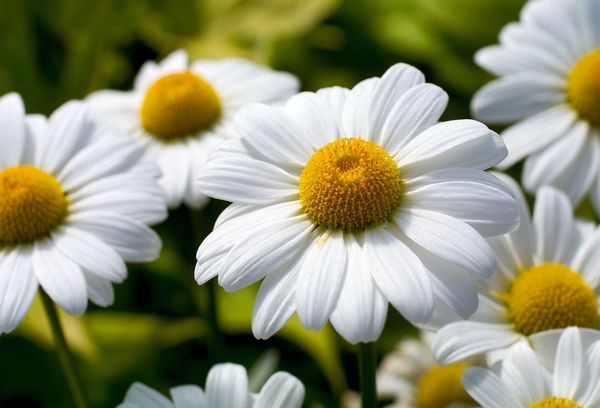
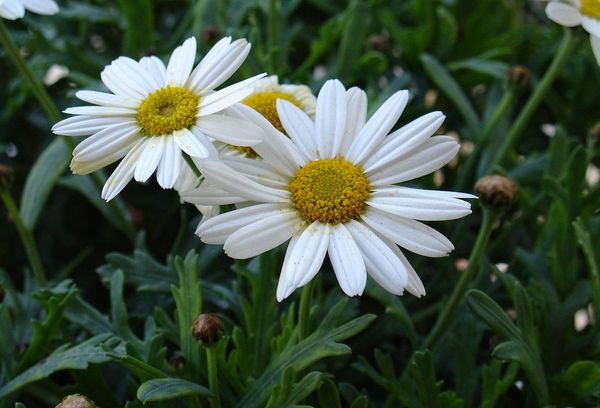
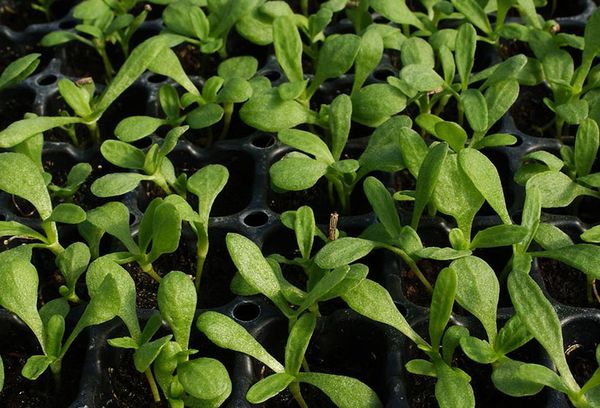

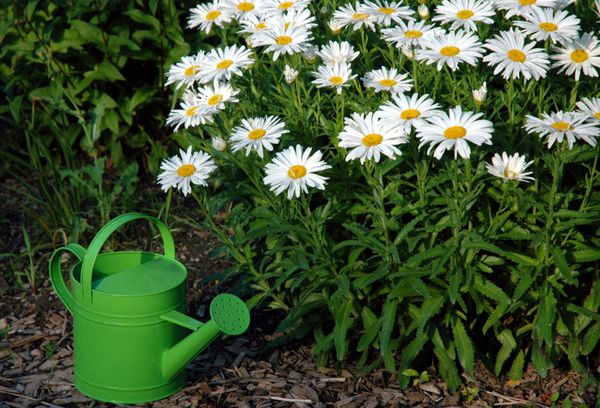
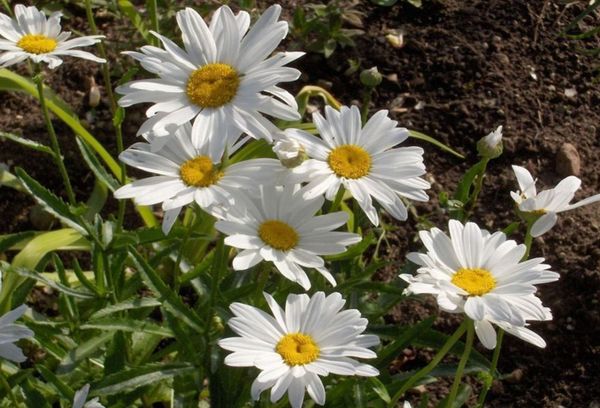

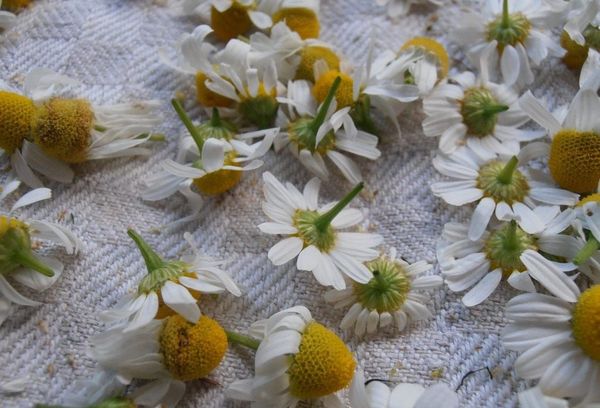
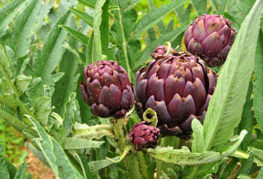
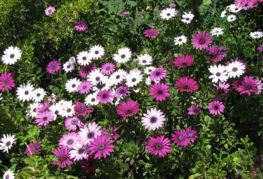
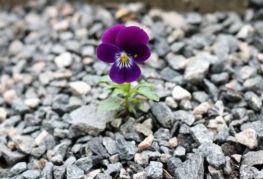
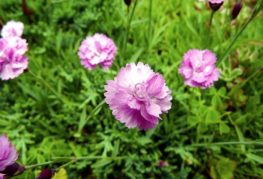

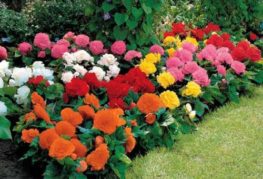
and will be published shortly.